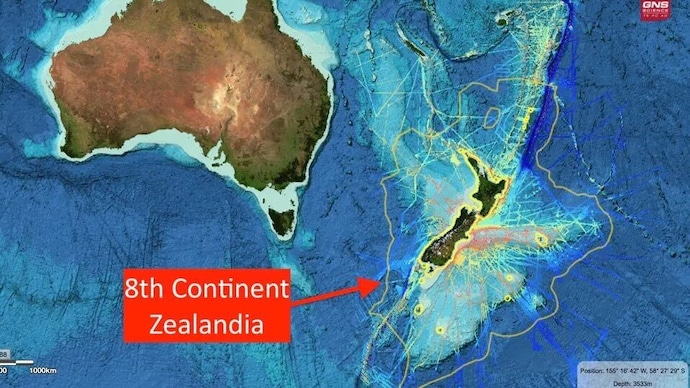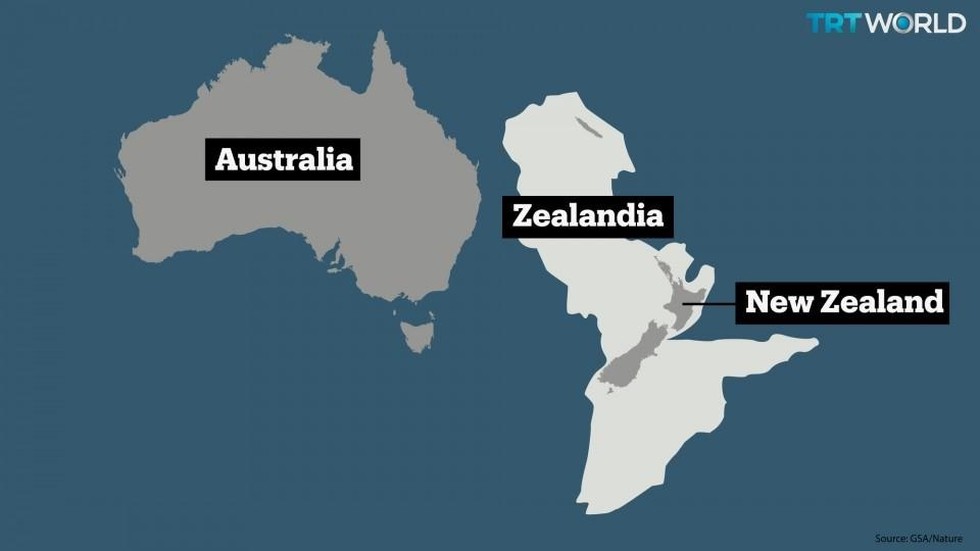#Introduction
Beneath the vast expanse of the Pacific Ocean, where the ocean's depths are shrouded in mystery, lies a hidden continent, Zealandia. Emerging as one of the most recent and groundbreaking discoveries in the field of geology, Zealandia challenges our understanding of Earth's continents. In this blog, we will embark on a journey through the discovery, geological significance, and ecological diversity of Zealandia, the submerged continent that is changing the way we perceive our planet.
#The Discovery of Zealandia
For centuries, the world's continents were thought to be well-defined landmasses rising above sea level. However, in the 21st century, scientists made a groundbreaking revelation that reshaped the map of the Earth's continents. Zealandia, once considered a collection of underwater plateaus and ridges, was recognized as a submerged continental mass, stretching over 4.9 million square kilometers beneath the southwestern Pacific Ocean.
Zealandia consists of two major landmasses, New Caledonia and New Zealand, along with several smaller islands. It shares geological roots with the supercontinent Gondwana, which existed around 200 million years ago. Over eons, Zealandia's landmass gradually fragmented, drifted, and sank beneath the ocean's surface, hiding its continental identity.
#Geological Significance
Zealandia is not just a curiosity; it holds profound geological importance. It challenges the traditional definition of continents, which typically requires a landmass to be largely above sea level. Zealandia, though submerged, meets the geological criteria of a continent, including a well-defined area, a diverse range of rocks, and a thicker, less dense crust compared to the ocean floor.
This submerged continent sheds light on the dynamic nature of Earth's lithosphere. Zealandia's history is a testament to the Earth's ever-changing crust, where tectonic forces continue to shape and reshape continents. The discovery of Zealandia also provides valuable insights into the processes of continental break-up, continental submersion, and plate tectonics, all of which are essential to understanding the Earth's geological history.
#Ecological Diversity
Zealandia, despite being mostly underwater, is teeming with unique ecosystems and wildlife. Its underwater world, encompassing a wide range of depths and habitats, is home to diverse marine species, including coral reefs, fish, and crustaceans. The deep oceanic trenches and underwater plateaus of Zealandia support an intricate food web, where species have adapted to the challenging conditions of the deep sea.
One of the most remarkable features of Zealandia's underwater environment is the existence of hydrothermal vents. These vents, often found near tectonic plate boundaries, are inhabited by extremophiles – organisms that thrive in extreme conditions of high pressure, temperature, and mineral-rich waters. The study of these unique ecosystems in Zealandia has the potential to expand our knowledge of life's adaptability and evolution.
#Submerged History
Zealandia's geological history is closely tied to the larger narrative of the breakup of the supercontinent Gondwana. Around 85 million years ago, Zealandia was part of eastern Gondwana. As tectonic forces pushed and pulled, the continent began to break away and subside. This process not only shaped Zealandia but also gave rise to the Tasman Sea, which now separates the submerged continent from Australia.
Over millions of years, Zealandia's story was marked by the movement of tectonic plates and the relentless forces of nature. It sank beneath the waves, its surface changing from an ancient landmass to a hidden underwater realm. Today, Zealandia remains a geological testament to the Earth's ever-shifting landscapes.
#Zealandia and Climate Change
Zealandia's underwater landscapes are not just of interest to geologists and marine biologists; they also have significant implications for understanding climate change. The submerged continent plays a role in the planet's carbon cycle by sequestering and storing carbon in the form of organic material and sediments. This, in turn, has an impact on the Earth's climate regulation and the global carbon balance.
Zealandia's unique geological features, including seamounts and ridges, can provide insights into the history of ocean circulation patterns, which play a crucial role in regulating climate. By studying the geological record preserved in Zealandia's submerged landscape, scientists can gain a better understanding of past climate variations and make more accurate predictions about future climate trends.
#Conclusion
Zealandia, Earth's hidden continent beneath the waves, has unveiled a world of geological wonders, ecological diversity, and submerged history. This discovery challenges our conventional understanding of continents and deepens our appreciation of the dynamic forces that shape our planet.
As scientists continue to explore and study Zealandia, its ecological treasures and geological significance continue to emerge. The submerged continent is a testament to the ongoing story of our planet's evolution and its enduring mysteries. Zealandia, once hidden in the depths of the Pacific, now stands as a symbol of the unending journey of discovery that the Earth invites us to embark upon.







Comments
Post a Comment